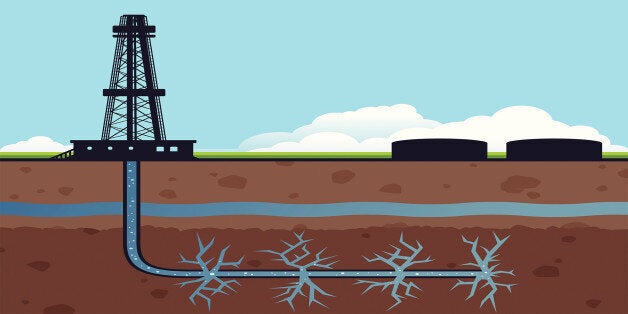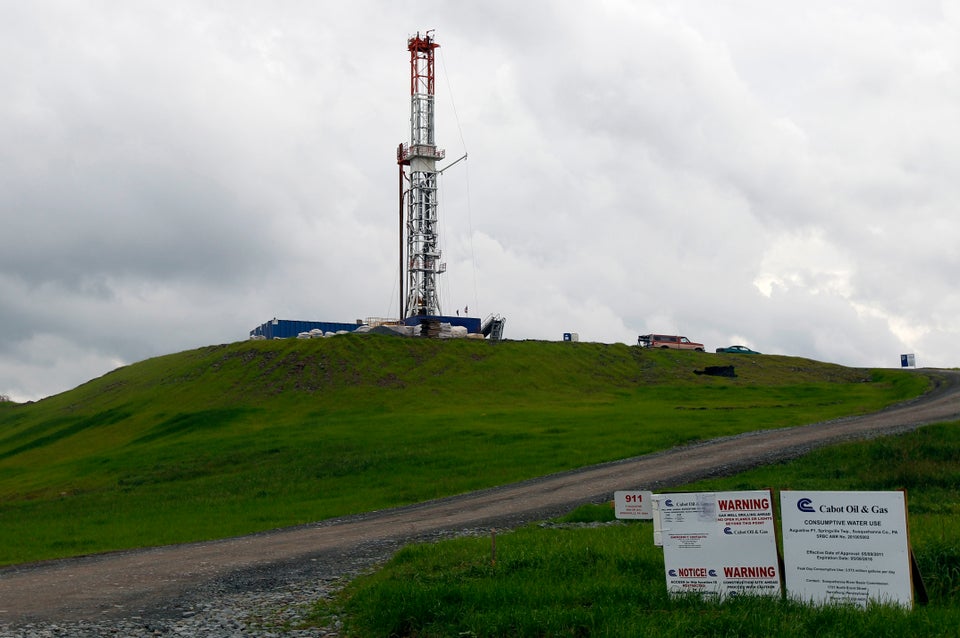
LONDON -- The end of the shale boom is nigh. The recent plunge in oil prices reveals an economic and geological reality that some brave industry analysts depict, but which power brokers in Washington, Houston and on Wall Street fail to accept. With low energy prices, the U.S. shale revolution is unaffordable.
In contrast with producing conventional oil and gas in the Middle East, the cost of producing shale gas and light tight oil in the United States is simply unsustainable. Far from leading America to a future of energy independence, the fracking boom has locked the country into a high-cost game. And despite surging oil production in North Dakota's Bakken Shale and Texas' Eagle Ford Shale, America continues to rely on OPEC oil to meet its transport needs. In fact, Saudi imports to the U.S. have remained steady amidst the shale gale in the last few years.
Those journalists who envision a "world without OPEC," and geopolitical risk experts who question an "end of the Middle East," had better think again.
According to geologist Arthur Berman, the sharp gust of shale may provide the U.S. with a 14-year supply of natural gas. While this may do wonders for electricity bills, Americans will rely on Arabian oil for as long as they drive cars and fly airplanes. The impact of low oil prices on shale production reveals something we have already seen in natural gas -- but few want to acknowledge it. The Bureau of Economic Geology at the University of Texas -- arguably the country's most preeminent gathering of geologists -- completed a study of the performance of producing shale gas in the Barnett and Fayetteville reservoirs. An interdisciplinary team of geologists, economists and engineers examined these shale basins on a well-by-well basis and found that with $4.00 per MMBtu, 70 percent of the wells were commercial failures. To put it simply, producers were making less money than they were putting in.
Hang on a minute! According to one of the country's most prestigious energy research groups, more than two-thirds of some of America's largest shale gas plays are economically unviable? This is fairly big news to brush under the carpet. Although the BEG reports are for natural gas plays, the team is set to publish reports this year on shale oil in Texas' Eagle Ford, and we are likely to see analogous results. Shale oil and gas are simply too expensive over the long term.
Why is the cost of shale so high? Shale hydrocarbons are trapped in densely packed layers of rock. In order to penetrate the rock, companies must use sophisticated technology to drill down horizontally -- sometimes up to three miles -- and then pump the formation with a mixture of water, sand, and "proppants" to allow the resources to seep out.
This deep mining procedure is worlds away from the simple oil and gas operations in the Middle East, where resources are often easily extracted from the sandstone and limestone reservoirs. In shale production, not only is the cost of each well astronomical (from about $3 - $12 million), but also, a vast number of wells must be drilled. According to the International Energy Agency, the Parisian-based research institute backed by wealthy countries, it takes approximately 2,500 wells per year to maintain production of 1 million barrels per day in North Dakota, while it requires about 60 wells per year to maintain the same level of oil production in Iraq.
The need to drill horizontally means more acreage -- and as producers fork out cash for royalties to private landowners, more acreage means a bigger bill. Now we see why it costs $100 to produce a barrel of oil in the Bakken basin of North Dakota and Montana, while producing the same barrel of oil in Saudi Arabia's prolific Ghawar field costs in the order of $10.
Finally -- and this may be the death knell for America's fracking boom -- shale wells peak early. After an initial flush of oil and gas, production sharply drops off producing almost half of a well's reserves in the first year. This is in contrast with most conventional production, which yields a longer plateau of high production rates.
The sharp decline rate in the production of shale is what has most investors and policymakers confused: although these wells are estimated to have a long shelf life until 2020, 2030, or 2035, the "tail" of production is long and skinny, rather than a corpulent and abundant plateau. Even when presented with this data, Wall Street financiers profess their faith in the power of technology to 'optimize' the process of shale production. However, technology comes with a cost -- and even the most sophisticated tools are powerless over the geological reality of rapid well depletion rates and the economic reality of the high cost of shale production. In spite of the wonders of Silicon Valley, technology will not magically transform America's fracking revolution into a low-cost energy solution.
Yes, the U.S. may indeed surpass Saudi Arabia as the world's largest producer of crude oil, but the real question is: at what cost? And for how long?
WHAT SHORT SHALE MEANS FOR MIDDLE EAST POLITICS
Curiously, on the eve of launching airstrikes at ISIS, President Obama reminded the American public that we are closer "than [we have] been in decades" to energy independence. Yes, he proffers, we may be peppering Syria and Iraq with a smattering of airstrikes, but don't worry guys, this time, it's different: we're not in it for oil.
This is a comforting tonic to liberal policy circles. At last, America can become a responsible power. It can return home from its foreign policy misadventures, and it might even benevolently share its bounty of natural gas via exports to its free trade partners. Unfortunately, the economic and geological reality illustrated in the BEG reports -- and plunging oil prices -- indicate a shale bubble, and consequently, a future of U.S. energy dependence on OPEC.
Well, what about "the end of the Middle East?" Surely low oil prices are hammering Saudi Arabia's ability to cover its civil service salaries, fuel subsidies and other budget costs to keep its population happy. But the bottom line is: Saudi has a market. It is Asia.
Beyond shocks in emerging markets, Asia's resource-hungry nations will continue to engage in the Middle East as a source of relatively cheap and abundant oil and gas -- at a much lower cost than the U.S.
While some may hopefully fantasize about Saudi Arabia’s dissolution, the quicksand of shale may sink faster than they think. It is time for a new form of engagement that invests in private sector job creation in the Middle East -- one that addresses their burgeoning youthful population -- rather than a fruitless quest for energy security based solely on arms sales, democracy promotion and military deployments.

